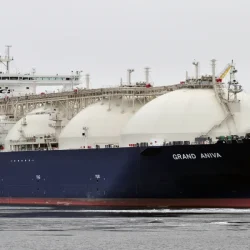Sharp Increase in Iran’s Oil Exports to China; A New Record in Energy Cooperation
According to Reuters, Western analysts have stated that the rise in oil exports from Russia and Iran to China—the world’s largest oil importer—has somewhat eased supply concerns and reduced upward pressure on global oil prices.
U.S. Sanctions and Rising Shipping Costs
Washington has imposed multiple sanctions on vessels and entities involved in transporting oil subject to U.S. restrictions. In the January 10 sanctions package, more than 140 tankers—accounting for approximately 42% of Russia’s total seaborne oil exports—were targeted. This move led to an increase in maritime transportation costs.
Increase in Non-Sanctioned Tanker Activity
Emma Li, an analyst at Vortexa, reported that the tripling of transportation costs for ESPO oil from Russia’s Kozmino port to China—typically a one-week journey—prompted at least 17 non-sanctioned tankers to join this route between January 11 and February 20.
According to data from financial firm LSEG, 11 new tankers have also been added to the fleet transporting Russian oil to China. Traders have confirmed that the cost of shipping oil from Russia’s Far East to northern China has recently ranged between $4 million and $4.5 million.
Vortexa data indicates that non-sanctioned tankers managed to increase ESPO oil shipments to 920,000 barrels per day in February, up from 860,000 barrels per day in January. However, ESPO oil deliveries to China declined to 780,000 barrels per day in February.
The Role of China’s New Terminals in Iranian Oil Imports
According to data from Kpler and statements from traders, the tanker Daban loaded approximately two million barrels of oil from three smaller tankers in early February. This vessel, previously used to transport Iranian oil to China, was recently spotted en route to Yantai, China.
Earlier, Reuters reported that some of China’s newly developed terminals, including Dongying in Shandong and Zhoushan in eastern China, have enabled the offloading of sanctioned oil tankers.
Richard Bronze, head of geopolitics at Energy Aspects, believes that the increased flow of Russian oil to China is partly due to reduced refinery activity in Russia caused by Ukrainian drone attacks. This has left more crude oil available for export. Additionally, the slowdown in exports to Turkey and other destinations following new U.S. sanctions in January has led to a rise in Russian Urals oil shipments to China.
Surge in Iran’s Oil Exports to China
Vortexa data shows that China’s imports of Iranian oil surged to 1.4 million barrels per day between February 1 and 20, up from less than 800,000 barrels per day in January.
The volume of Iranian oil sent to China’s Shandong province has also exceeded 1.1 million barrels per day, surpassing the 2024 average.
According to Kpler data, Iranian oil shipments to China increased from 692,000 barrels per day in January to 771,000 barrels per day in February.
Reuters notes that the discrepancy between the two companies’ data is due to differences in their methods of tracking and monitoring tankers.








